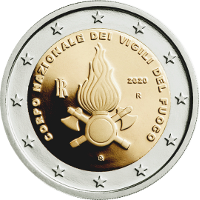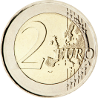 |
C o m m e m o r a t i v e C o i n s |
||
 🔎
🔎 |
 |
Estonia | 27 Jan. 2020 | 200th anniversary of the discovery of the Antarctic |
20001 20002 20005 |
750,000 |  |
 🔎
🔎 |
 |
Germany | 28 Jan. 2020 | Brandenburg (Sanssouci Palace in Potsdam) 15th coin in the Federal States series |
20002 20007 20008 |
30,567,500 |  |
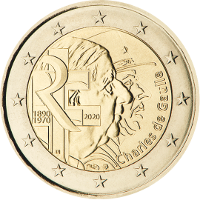 🔎
🔎 |
 |
France | 31 Jan. 2020 | Charles de Gaulle |
20001 20002 20005 |
18,061,940 |  |
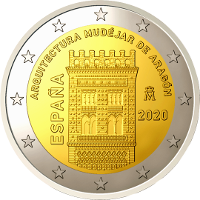 🔎
🔎 |
 |
Spain | 31 Jan. 2020 | Mudéjar Architecture of Aragon 11th coin in the UNESCO Wourld Heritage Sites series |
20001 20002 20005 |
4,024,500 |  |
 🔎
🔎 |
 |
Estonia | 01 Feb. 2020 | 100th anniversary of the Treaty of Tartu |
20001 20002 20005 |
1,000,000 |  |
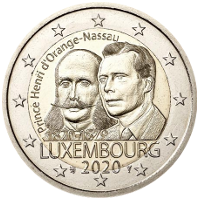 🔎
🔎 |
 |
Luxembourg | 26 Feb. 2020 | Bicentenay of the birth of Prince Henry of Orange-Nassau 23rd coin of the Grand-Ducal Dynasty series |
20001 20002 20005 |
316,000 |  |
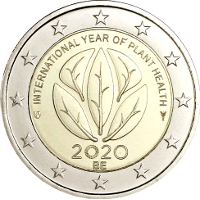 🔎
🔎 |
 |
Belgium | 05 Mar. 2020 | International year of plant health |
20002 20007 20008 |
755,000 |  |
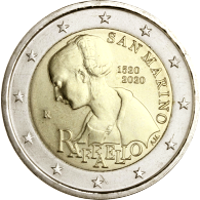 🔎
🔎 |
 |
San Marino | 05 Mar. 2020 | 500 years since the death of Raphael |
20002 20003 20005 |
56,500 |  |
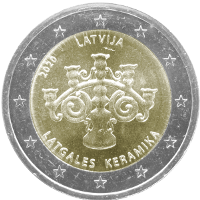 🔎
🔎 |
 |
Latvia | 05 Jun. 2020 | Letgalian ceramics |
20002 20007 20008 |
412,000 |  |
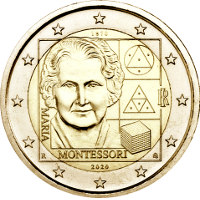 🔎
🔎 |
 |
Italy | 09 Jun. 2020 | 150th birthday of Maria Montessori |
20002 20003 20005 |
3,000,000 |  |
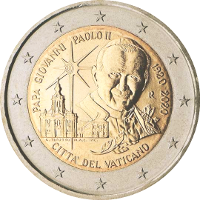 🔎
🔎 |
 |
Vatican City | 23 Jun. 2020 | 100th birthday of Pope John Paul II |
20001 20002 20005 |
79,000 |  |
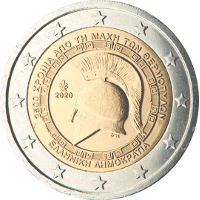 🔎
🔎 |
 |
Greece | 30 Jun. 2020 | 25th Centenary of the Battle of Thermopylae |
20002 20007 20008 |
750,000 |  |
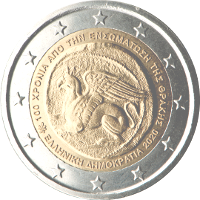 🔎
🔎 |
 |
Greece | 16 Jul. 2020 | 100th anniversary of the union between Thrace and Greece |
20002 20007 20008 |
750,000 |  |
 🔎
🔎 |
 |
Malta | 24 Jul. 2020 | Skorba Temples 5th coin of the Maltese Prehistoric Sites series |
20002 20007 20009 |
200,000 |  |
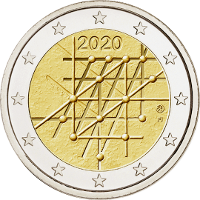 🔎
🔎 |
 |
Finland | 18 Aug. 2020 | 100 years since the foundation of the University of Turku |
20002 20007 20008 |
720,000 |  |
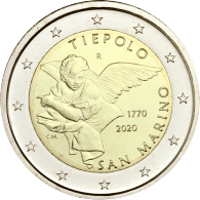 🔎
🔎 |
 |
San Marino | 27 Aug. 2020 | 250 years since the death of Giovanni Battista Tiepolo |
20002 20003 20005 |
56,500 |  |
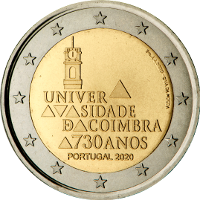 🔎
🔎 |
 |
Portugal | 01 Sep. 2020 | 730 years since the foundation of the University of Coimbra |
20001 20002 20005 |
360,000 |  |
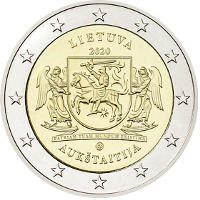 🔎
🔎 |
 |
Lithuania | 16 Sep. 2020 | Aukštaitija (Northeast Lithuania) 2nd coin in the series of Lithuanian Ethnographical Regions |
20002 20003 20005 |
500,000 |  |
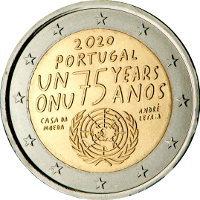 🔎
🔎 |
 |
Portugal | 07 Oct. 2020 | 75th anniversary of the United Nations |
20001 20002 20005 |
510,000 |  |
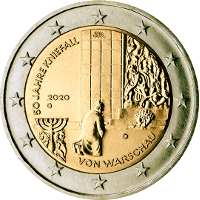 🔎
🔎 |
 |
Germany | 08 Oct. 2020 | 50th anniversary of the Warsaw kneeling |
20002 20007 20008 |
30,350,000 |  |
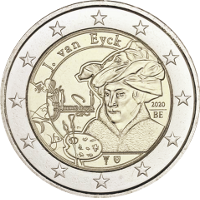 🔎
🔎 |
 |
Belgium | 15 Oct. 2020 | Jan van Eyck |
20002 20007 20008 |
155,000 |  |
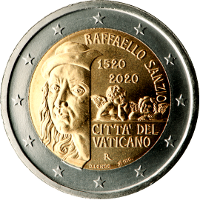 🔎
🔎 |
 |
Vatican City | 16 Oct. 2020 | 500th anniversary of the death of Raffael |
20001 20002 20005 |
79,500 |  |
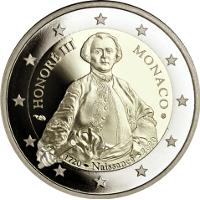 🔎
🔎 |
 |
Monaco | 20 Oct. 2020 | 300th anniversary of the birth of Honoré III |
20002 20003 20005 |
15,000 |  |
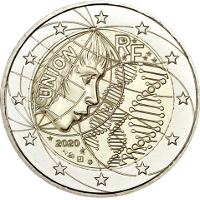 🔎
🔎 |
 |
France | 27 Oct. 2020 | Medical Research |
20002 20003 20005 |
310,000 | 
|
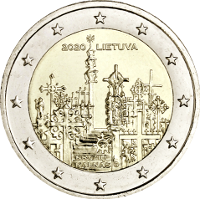 🔎
🔎 |
 |
Lithuania | 04 Nov. 2020 | Hill of crosses |
20002 20003 20005 |
500,000 | 
|
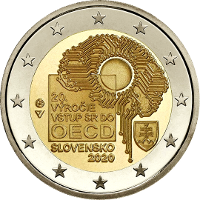 🔎
🔎 |
 |
Slovakia | 11 Nov. 2020 | 20th anniversary of Slovakia’s accession to the OECD |
20001 20002 20005 |
1,000,000 | 
|
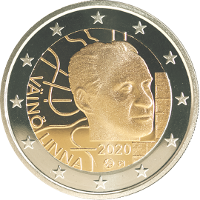 🔎
🔎 |
 |
Finland | 11 Nov. 2020 | 100th anniversary of Väinö Linna |
20002 20007 20008 |
700,000 | 
|
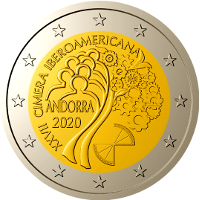 🔎
🔎 |
 |
Andorra | 09 Dec. 2020 | The 27th Ibero‐American Summit in Andorra |
20001 20002 20005 |
73,500 | 
|
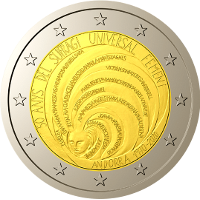 🔎
🔎 |
 |
Andorra | 09 Dec. 2020 | 50th anniversary of Universal Female Suffrage |
20001 20002 20005 |
60,000 | 
|
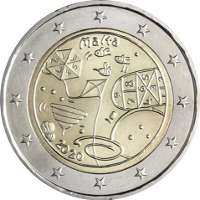 🔎
🔎 |
 |
Andorra | 14 Dec. 2020 | Children's Games 5th coin of the from children in solidarity series |
20002 20007 20008 |
220,000 | 
|
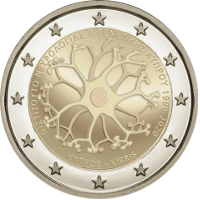 🔎
🔎 |
 |
Cyprus | 14 Dec. 2020 | 30 year anniversary of the Institute for neurology and genetics |
20002 20003 20005 |
412,000 | 
|
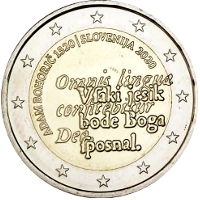 🔎
🔎 |
 |
Slovenia | 23 Dec. 2020 | 500th anniversary of the birth of Adam Bohorič |
20002 20007 20008 |
1,000,000 | 
|
 🔎
🔎
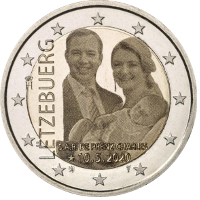 🔎
🔎 |
 |
Luxembourg | 24 Dec. 2020 | Birth of Prince Charles of Luxembourg 24th coin of the Grand-Ducal Dynasty series |
20001 20002 20005 |
331,000 | 
|
| ⇓ 2021 ⇓ |
| References : | |||
| 20001 | Images taken with authorisation by the ECB - Mail dated 20.Feb.2020 © "European Central Bank" |
20002 | Data mirrored from Wikipedia Page "2_euro_commemorative_coins" with friendly support of the guardians of that page. |
| 20003 | Images taken with authorisation by H....... Hamburg | 20004 | Coloured version of this Commemorative Coin in circulation EU‐legal‐technical specifications do not recongnise colour prints. The EU nevertheless tolerates them, as their numbers are very small and they are sold in special packs and therefor are very unlikely to be used as currency. |
| 20005 | enlarged Images taken with authorisation by Gerd Seyffert © "Gerd Seyffert 2021" |
20006 | Not Applicable |
| 20007 | Images taken by Münzen Kreuzberg © "Münzen Kreuzberg 2021" |
20008 | enlarged Images taken by Münzen Kreuzberg © "Münzen Kreuzberg 2021" |
 |
